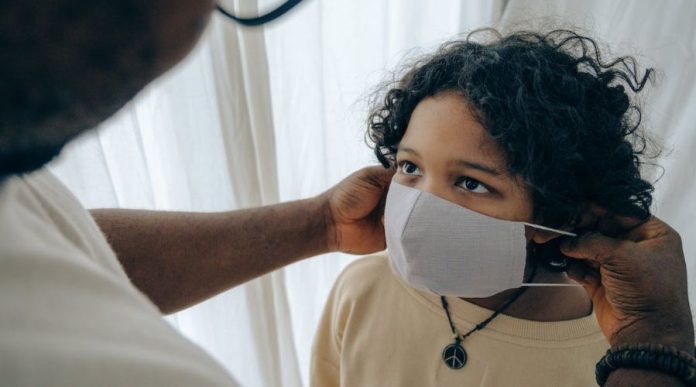Multiple variants of SARS-CoV-2 were identified throughout the COVID-19 pandemic.
The virus’ genetic material can mutate whenever viruses replicate inside a host cell.
Since SARS-CoV-2 is a rapidly spreading virus with a high replication rate, it has many opportunities to evolve and change.1
A new study investigates the differences between the Omicron variant and other variants of SARS-CoV-2, the virus that causes COVID-19.
The differences are in the details
Omicron is a recent yet well-known variant of SARS-CoV-2. Omicron’s genetic material differs from earlier variants like B.1, B.1.1, and Delta SARS-CoV-2.2
Research suggests that Omicron may exhibit structural differences from other variants, increasing transmission risk.2,3,4
To address the knowledge gap, the differences between Omicron and other variants of SARS-CoV-2 were studied.
The researchers also examined how replicas of the variants responded to human antibodies, COVID-19 vaccines, and approved treatments for COVID-19.
What did the researchers do
First, researchers developed SARS-CoV-2 virus-like particles (VLPs) for four variants: B.1, B.1.1, Delta, and Omicron.2
VLPs are designed to mimic viral particles in research but do not contain the genetic material necessary for transmission (viral genome).5
By using VLPs, researchers can avoid costs and logistics limitations.
To maximize the accuracy of the VLPs, the scientists focused on replicating four essential structural proteins thought to assist in viral transmission.2
The structural differences were examined, and the activity of the VLPs was monitored.
The monitoring was done using an imaging system that tracks the expression of the enzyme luciferase.
Following if and how the enzyme is ‘called to duty’ can suggest the activity of the virus and show ways it may be destroyed.6
The results indicated that the Omicron and Delta variants had a viral assembly and cell entry rates that were, on average, 4.6 times higher than the original variant.2
Additionally, Omicron versus Delta and other variants were 15 times more effective in avoiding neutralization from human SARS-CoV-2 antibodies than the original variant.
Next, the VLPs of all four variants were tested with the blood serum of 38 participants with SARS-CoV-2 antibodies (antiserum).
The participants were either survivor of COVID-19 or had received the Pfizer, Moderna, or Johnson & Johnson COVID-19 vaccine.2
The VLP testing was done to investigate the activity of the VLPs against human antibodies in vaccinated and unvaccinated individuals.
Finally, researchers investigated whether four known monoclonal antibodies (MAs), a therapy that helps the immune system perform a specific action, could prevent the entry of VLPs into host cells.
The four MAs were casirivimab, imdevimab, sotrovimab, and bebtelovimab.2
What were the results?
The subjects that received the Omicron booster of a third Pfizer COVID-19 vaccine developed SARS-CoV-2 antibodies capable of neutralizing the Omicron variant.
The development of antibodies suggests that the Pfizer mRNA-based COVID-19 booster vaccine could have a protective effect against the Omicron variant.
Finally, the new MA (bebtelovimab) effectively neutralized all four SARS-CoV-2 variants.
Casirivimab and imdevimab neutralized the B.1 and Delta variants but not Omicron.
Limitations and next steps
The use of antiserum from only 38 participants was a limitation of this study.
Moreover, a similarity between the VLPs and viruses was not established.
However, the results of this study suggest that the Omicron variant displays structural and functional differences from the original variants.
The effects of these differences, or genetic mutations, are still unknown.
Therefore, more research is needed to establish the structural and functional characteristics of Omicron.
References
- Amicone, M., Borges, V., Alvez, M., et al (2022, March 29). Mutation rate of SARS-CoV-2 and emergence of mutators during experimental evolution. Evolution, Medicine, and Public Health 10(1): 142-155. Doi: 10.1093/emph/eoac010
- Syed, A.M., Ceiling, A., Taha, T.Y., et al (2022, July 19). Omicron mutations enhance infectivity and reduce antibody neutralization of SARS-CoV-2 virus-like particles. PNAS 119(31). Doi: 10.1073/pnas.2200592119
- Kumar, S., Thambiraja, T., Karuppanan, K., et al (2022, April). Omicron and Delta variant of SARS-CoV-2: A comparative computational study of spike protein. Comparative Study 94(4): 1641-1649. Doi: 10.1002/jmv.27526
- Manica, M., De Bellis, A., Guzzetta, G., et al (2022, June 30). Intrinsic generation time of the SARS-CoV-2 Omicron variant: an observational study of household transmission. The Lancet. Doi: 10.1016/j.lanepe.2022.100446
- Shirbaghaee, Z., Bolhassani, A. (2016, March). Different applications of virus-like particles in biology and medicine: Vaccination and delivery systems. Biopolymers 105(3): 113-132. Doi: 10.1002/bip.22759
- Barry, M.A., May, S., Weaver, E.A. (2014, August 6). Imaging luciferase-expressing viruses. Methods Mol Biol 797: 79-87.



